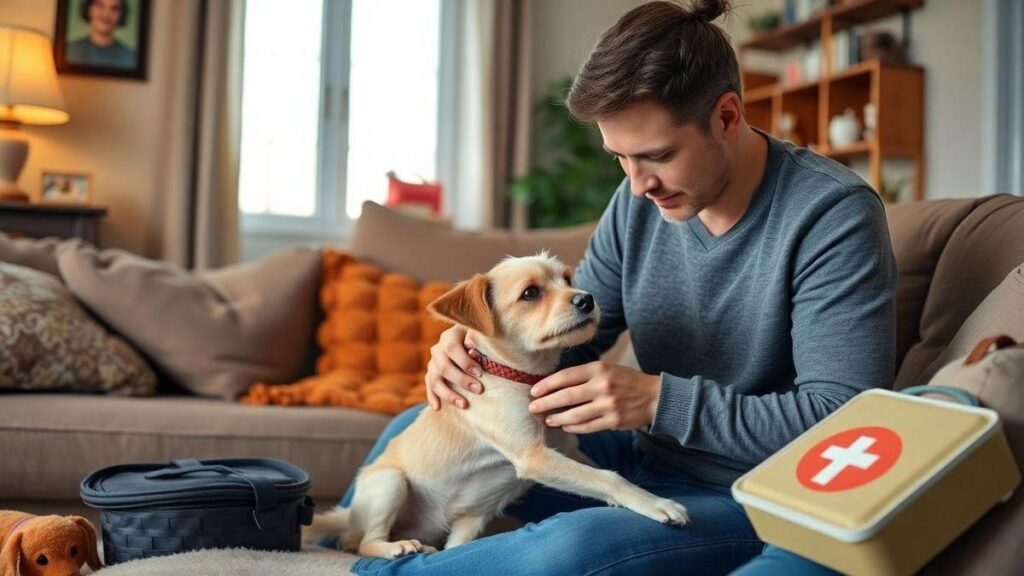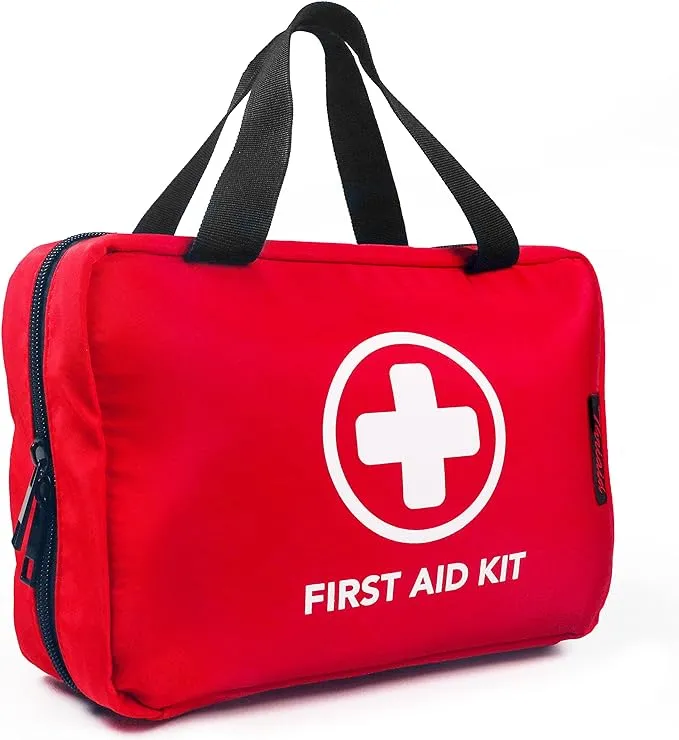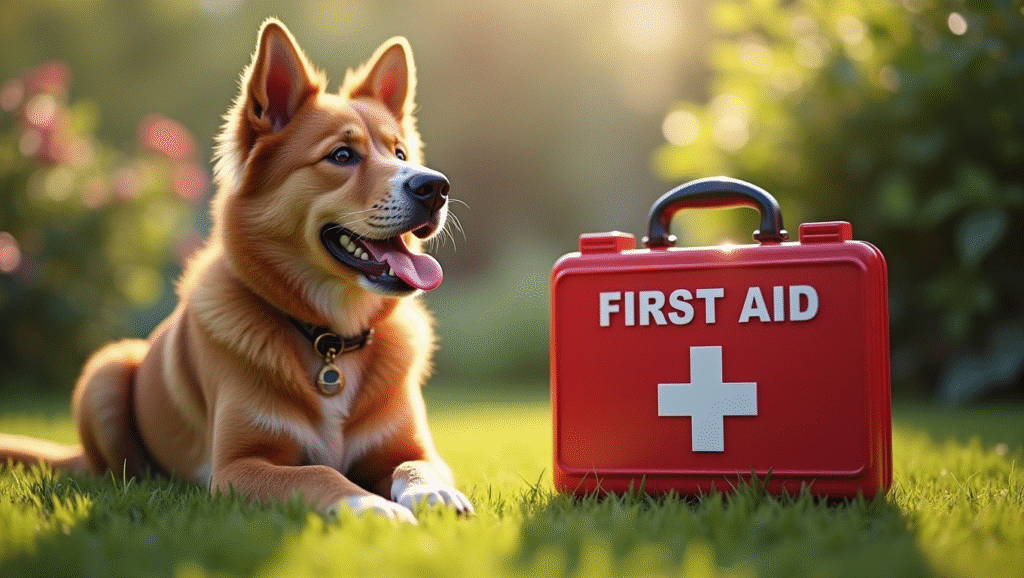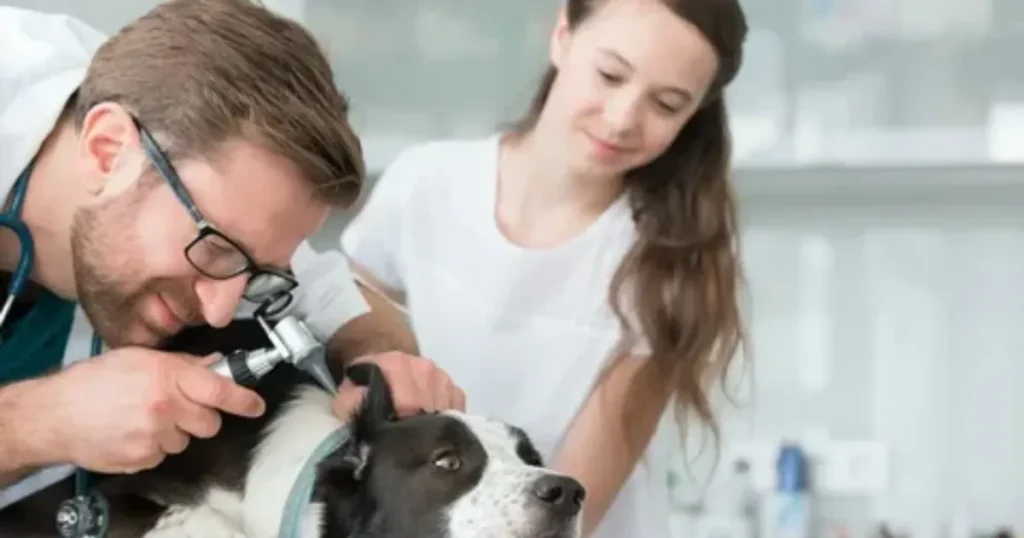Proven Methods to Save Your Dog’s Life at Home are crucial for every pet owner.
Accidents can happen anytime, and being prepared can make all the difference. Having a First Aid Kit at home is a great start.
This guide will help you understand common emergencies, share essential health tips, and teach you some lifesaving techniques. You’ll also learn how to create a safe environment for your furry friend.
So, let’s dive in and keep our pups safe together!
Key Takeaways
- Check your dog’s food and water daily.
- Keep harmful items out of reach.
- Know basic first aid for pets.
- Create a safe space for your dog.
- Stay calm during emergencies.

Summary
Understanding Common Dog Emergencies
Let’s face it, our furry friends can sometimes get into trouble. They’re curious creatures, and that curiosity can lead to scary situations. Common dog emergencies include choking, poisoning, heatstroke, and severe injuries from accidents. Knowing what to look out for can make a world of difference.
If your dog suddenly starts coughing or pawing at their mouth, they might be choking. It’s crucial to act fast. If your dog has eaten something toxic, like chocolate or certain plants, recognizing the signs early can save their life. Symptoms can range from vomiting to lethargy. Familiarize yourself with foods that are safe and unsafe for dogs to prevent poisoning.
Don’t forget about heatstroke! Dogs can’t cool down as easily as we do. If it’s a hot day and your pup is panting heavily, find some shade and water.
Being aware of these common emergencies can help you react quickly and confidently when it matters most.
Essential Dog Health Tips for Every Pet Owner
Keeping your dog healthy is key to preventing emergencies. Regular vet check-ups are a must. They can catch potential health issues before they become serious. Vaccinations are also important, as they protect against life-threatening diseases.
Nutrition plays a big role too. Ensure your dog is eating a balanced diet. A little extra treat can lead to obesity and other health issues. Consider exploring natural meal options for your dog.
Exercise is essential for keeping your pup happy and healthy. Regular walks, playtime, and mental stimulation keep them fit and content. Don’t forget dental care! Regular brushing can prevent gum disease, which is more common than you might think.
Always monitor your dog’s behavior. Changes in appetite, energy levels, or bathroom habits can indicate something’s off. Trust your instincts – if something feels wrong, it probably is.
Lifesaving Techniques for Dogs: What You Need to Know
Knowing basic lifesaving techniques can be a game-changer in emergencies. If your dog is choking, you may need to perform the Heimlich maneuver. It sounds scary, but it’s straightforward.
For small dogs, hold them with their back against your chest. For larger dogs, stand beside them, wrap your arms around their belly, and give a quick thrust inward and upward to dislodge the object.
CPR can also be performed on dogs! If your pup is unresponsive and not breathing, here’s what to do:
- Check for breathing: If they aren’t breathing, place them on their side.
- Chest compressions: Place your hands over the heart area (just behind the front legs) and push down hard and fast – about 100-120 compressions per minute.
- Rescue breaths: After 30 compressions, give two breaths into their nose. Ensure to seal your lips around their snout to direct the air in.
Practice these techniques or take a pet first-aid class. You never know when you might need them!
Pet CPR Guidelines: A Step-by-Step Approach
Let’s break down pet CPR. Having a clear plan can help you stay calm in a crisis.
- Assess the Situation: Is your dog breathing? If not, check for a pulse. If there’s no pulse, it’s time to act.
- Positioning: Lay your dog on their right side. This position helps with blood flow during CPR.
- Compressions: Push down hard and fast in the chest area. Think of it like giving your dog a big bear hug. Keep the rhythm steady.
- Rescue Breaths: After 30 compressions, give two breaths. Ensure you see the chest rise. If it doesn’t, try again.
- Continue: Alternate between compressions and breaths until help arrives or your dog starts breathing again.
With practice, it can become second nature. It’s a great skill to have!
Emergency Dog Care: Preparing for the Unexpected
Preparation is key for your dog’s health. Having a pet first-aid kit at home is a great start. This kit should include:
- Bandages and gauze: For cuts and scrapes.
- Antiseptic wipes: To clean wounds.
- Tweezers: For splinters or ticks.
- Hydrogen peroxide: Can induce vomiting in certain poisoning cases (but check with your vet first!).
- Emergency contact numbers: Keep your vet’s number handy, along with the nearest emergency animal clinic.
Keep a folder with vaccination records and any known allergies. This information can be helpful in an emergency.
Consider taking a pet first-aid class to learn how to handle emergencies and gain confidence.
Proven Methods to Save Your Dog’s Life at Home
There are several methods you can use right at home that could save your dog’s life. One of the most important is recognizing signs of distress.
If your dog suddenly starts drooling excessively or seems restless, they might be in pain. This could indicate something serious like bloat, which can be life-threatening if not treated quickly. Understanding essential first aid tips can be invaluable in these situations.
Always have a plan. If your dog has a known condition, like seizures, know what to do when one happens. Keep a calm demeanor, time the seizure, and comfort your pup afterward.
Keep your home safe by removing hazardous items like cleaning supplies or small objects that can be swallowed. A little prevention goes a long way.
Home Safety for Pets: Creating a Safe Environment
Creating a safe environment for your dog is crucial. Dog-proof your space by keeping hazardous items out of reach. Consider cords, plants, and anything that could be harmful if chewed or ingested.
Make sure your furniture is safe as well. Dogs love to jump and climb, but they can get hurt if they fall. Ensure there are no sharp edges or unstable items.
Check your yard too. Ensure your fence is secure and there are no gaps for your dog to escape. Keep harmful plants out of reach.
Think about your dog’s mental health. Provide toys, puzzles, and activities to keep their minds engaged. A happy dog is a safe dog!

Canine Emergency Preparedness: Be Ready for Anything
Being prepared for emergencies is essential. Create an emergency plan for scenarios like a fire or natural disaster. Know where you would go and how to transport your dog.
Keep your emergency kit stocked with supplies, as mentioned earlier. Include a recent photo of your dog to help if they get lost.
Consider microchipping your dog. It’s a simple procedure that can make a huge difference if your pup ever goes missing.
Stay informed by keeping up with local news and weather reports. Being aware of potential dangers can help you prepare in advance.
Preventing Dog Accidents: Tips for a Safer Home
Prevention is always better than cure. Here’s how to prevent accidents in your home:
First, keep your floors clear. Toys, shoes, and other items can be tripping hazards. Make it a habit to tidy up regularly.
Second, be cautious with food. Keep human food out of reach. Some foods, like grapes and onions, can be toxic to dogs. Refer to this guide on toxic foods for more information.
Supervise your dog during playtime. Some toys can break and become choking hazards.
Finally, teach your dog basic commands. Commands like leave it or stay can be lifesavers in dangerous situations. Training not only helps keep your dog safe but also strengthens your bond.
What to Do in a Dog Emergency: Quick Actions to Take
In an emergency, every second counts. Knowing what to do can make all the difference. Here’s a quick rundown of actions to take:
- Stay Calm: Your dog can sense your stress. Take a deep breath.
- Assess the Situation: Check for breathing, pulse, and any visible injuries.
- Call for Help: If it’s serious, call your vet or an emergency animal clinic.
- Provide First Aid: If you’re trained, apply basic first aid as needed.
- Transport Safely: If you need to take your dog to the vet, do so safely. Use a carrier or a secure harness.
- Follow Up: After the emergency, monitor your dog for any changes in behavior or health.
Having a plan in place can help you feel more prepared if something happens.
Conclusion
Being a responsible dog owner means staying prepared for the unexpected. From understanding common emergencies to mastering lifesaving techniques, every bit of knowledge can be a lifesaver for your furry friend. Remember, prevention is key! Create a safe environment, keep harmful items out of reach, and maintain regular vet check-ups.
For more insights on keeping your pet healthy, explore essential first aid tips.
By staying calm during emergencies and having a solid plan in place, you can navigate any crisis with confidence. So, gear up, educate yourself, and give your pup the safest life possible. If you found this guide helpful, don’t stop here! There’s a treasure trove of information waiting for you at Tech Havela.
Dive in and explore more articles to keep your pet healthy and happy!
Frequently Asked Questions
What are some proven methods to save my dog’s life at home?
You can learn CPR for dogs, keep emergency numbers handy, and make a pet first aid kit.
How can I tell if my dog is in danger?
Look for signs like difficulty breathing, excessive vomiting, or unusual behavior. Trust your instincts!
What should I include in a pet first aid kit?
Include bandages, antiseptic wipes, tweezers, and a digital thermometer. Don’t forget a muzzle for safety!
How often should I check my dog’s health at home?
You should check your dog’s health at least once a month. Look for lumps, bumps, or anything unusual.
Is there a way to prevent common accidents at home?
Yes! Keep poisons and dangerous items out of reach. Secure loose wires and cover sharp edges.
What should I do if my dog chokes?
Stay calm! Try to dislodge the object gently. If unsuccessful, perform the Heimlich maneuver.
When should I call the vet for help?
Call the vet if your dog shows serious signs of illness, like being lethargic or not eating. Better safe than sorry!
**Sidnir Vieira**
Founder of TechHavela
A passionate pet and tech content creator, helping dog owners across the U.S. make smarter decisions for their furry friends.



